 Voice Service
Voice Service The results of the main KPIs for voice tests achieved by operators with the split per the aggregation type are presented in Figure 1.
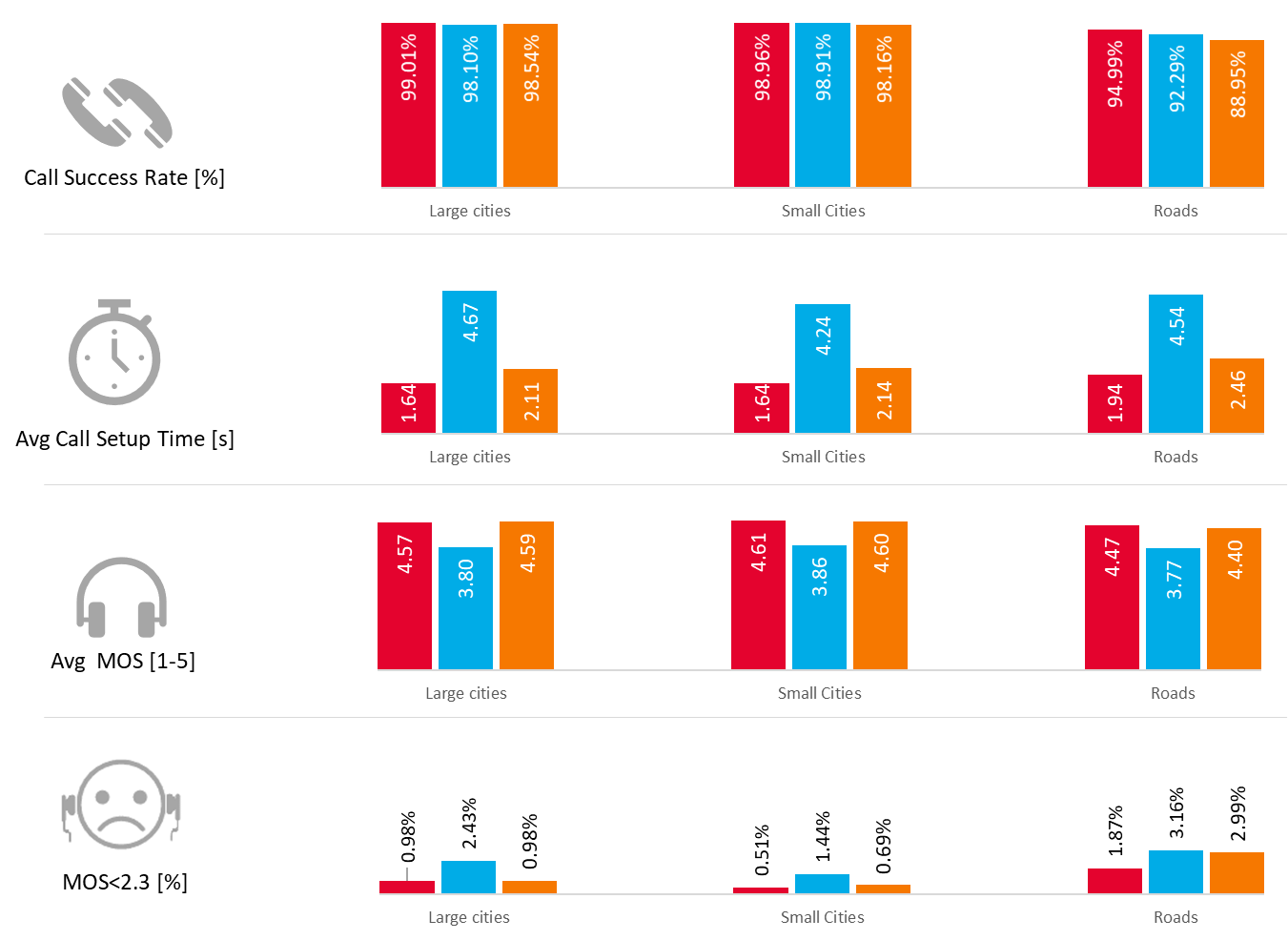
Fig. 1. Results of main KPIs for voice tests
Large Cities:
Telekom Srbija had the best success rate (above 99%) with Vip mobile in second and Telenor a bit further behind. The shortest average call setup time was in Telekom Srbija (1.64s). The best average speech quality (MOS - Mean Opinion Score) was achieved by Vip mobile with 4.59 score (scale from 1 to 5).
Small Cities:
The results in Small Cities were similar in terms of operator relative scoring as in Large Cities. Call success rate achieved by all operators was on a very similar level. Telekom Srbija had the shortest call setup time and achieved the highest speech quality (4.61 score).
Roads:
The Call Success Rate on roads was much lower in general than in cities, with Telekom Srbija having the best result. Telekom Srbija had the shortest call setup time (1.94s) and achieved the highest speech quality (4.47 out of 5).
In Table 1, voice failed calls and dropped calls scores for all three operators, in different aggregations, are shown.
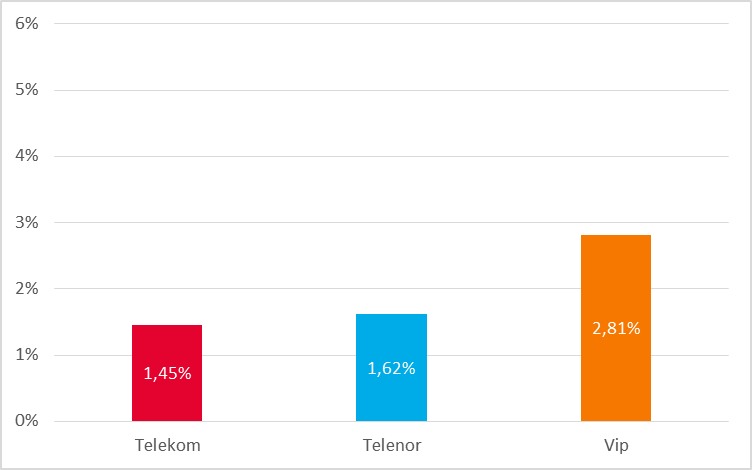
In Large Cities all operators achieved good results. Telekom Srbija and Vip mobile had below 1% of failed calls.
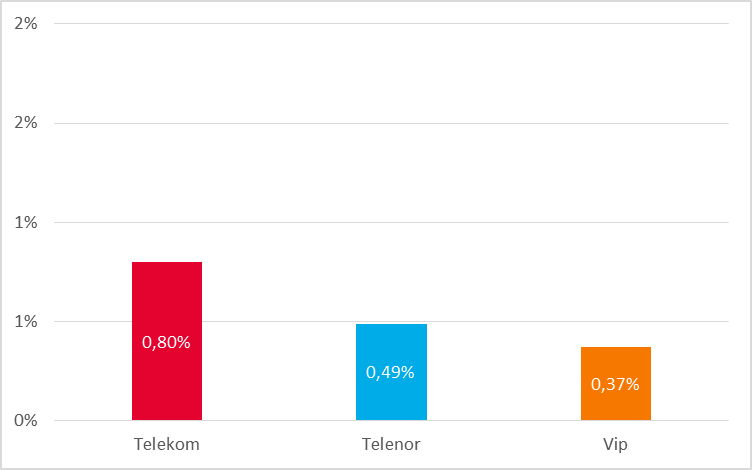
Telekom Srbija had the lowest percentage of dropped calls, only 0.19%. Vip mobile and Telenor were behind with results respectively 0.61% and 0.80%.
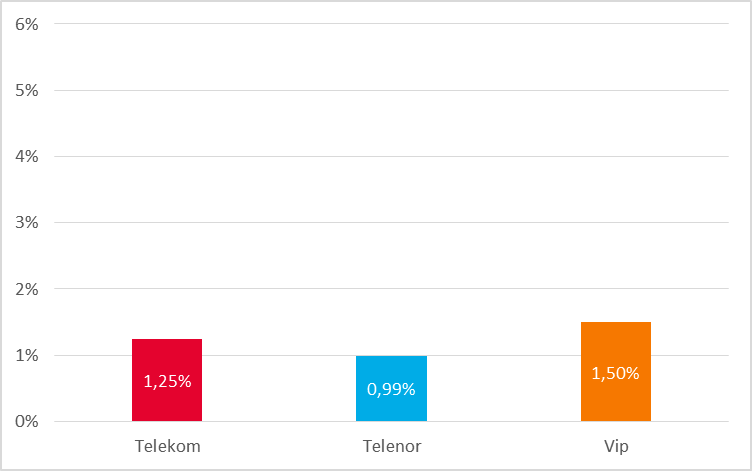
In Small Cities, all operators met the minimum expected call success rate - less than 3% of both failed and dropped calls. Telenor had the best result, 0.79% of failed calls.

The percentage of dropped calls in Small Cities was very low for all three mobile operators.
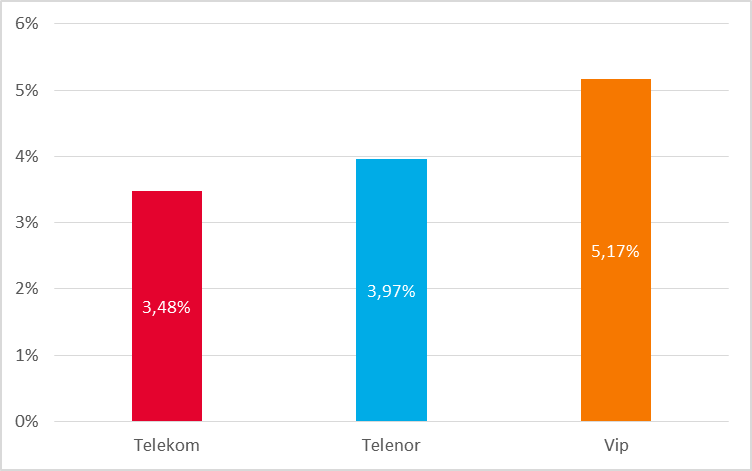
The results on Roads were worse than within the cities.. Vip mobile had the highest percentage of failed calls (over 9%).
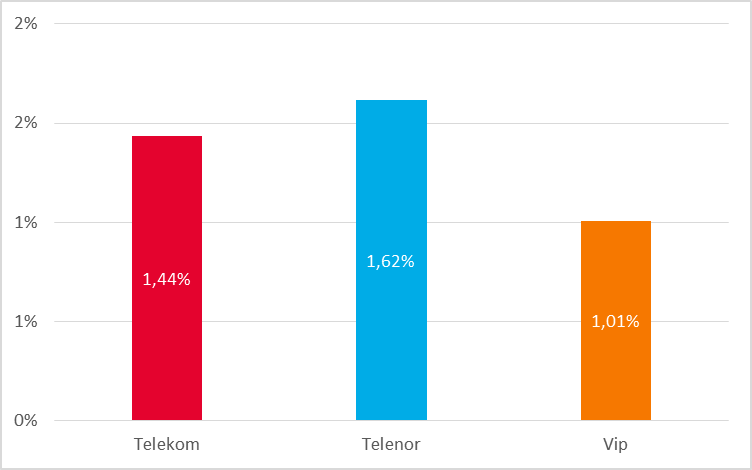
The dropped calls rate of Telekom Srbija and Vip mobile were close to each other. The lowest percentage of dropped calls was achieved in Telenor network and was equal to 1.42%.
Table 1. Voice Failed Calls and Dropped Calls
Figure 2 below presents average call setup time values for all three operators in different aggregations.
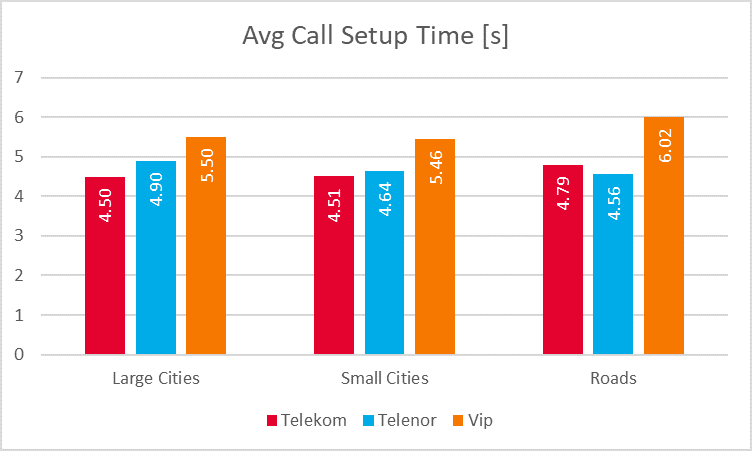
Fig. 2. Average call setup time values
Telekom Srbija and Vip mobile, both having VoLTE functionality implemented in their networks, achieved the shortest call setup times. Telekom Srbija had the best results, with call setup time about 0.5s faster than the Vip mobile. VoLTE (Voice over 4G) technology is currently not supported only in Telenor network, and therefore when the mobile device is connected to the 4G network and used to make or receive voice call, the device falls back to the 3G or 2G network to complete the call. This procedure is known as the Circuit Switch Fall back (CSFB). Due to no VoLTE functionality, Telenor used CSFB procedure to the largest extend and achieved the worst results for the call setup time.
Distribution of call setup time duration in Large Cities for all three mobile operators is presented in Figure 3.
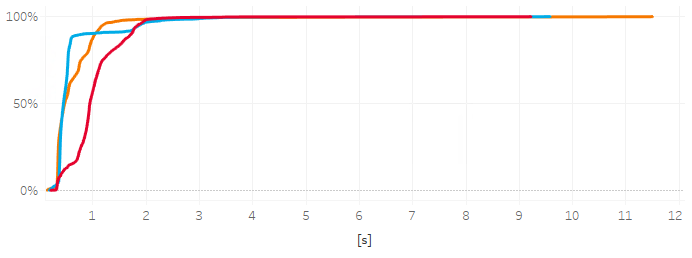
Fig. 3. Distribution of call setup time duration in Large Cities
Figure 4 below presents average MOS values for all three operators in different aggregations.
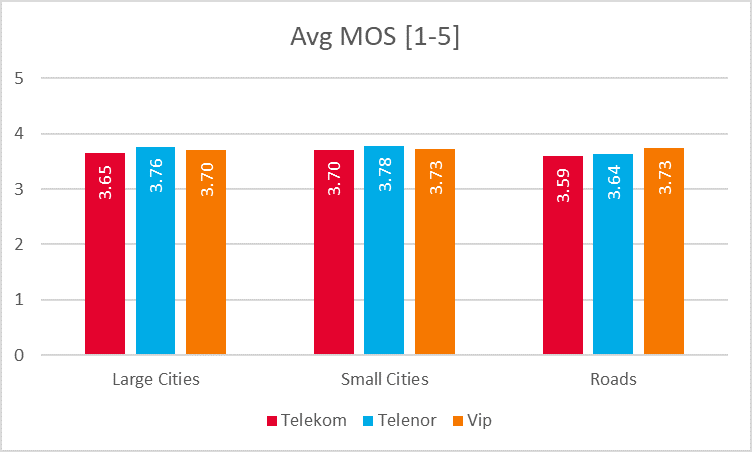
Fig. 4. Average MOS values
There is a variety of speech coding methods allowing transmission of the speech effectively. The use of codecs is determined by the quality of radio signal, available network technology and capacity of the network. Codecs offering the best speech quality require good radio conditions, reasonable radio resources and support of the codec by the network and mobile devices at both ends of the connection. In cases where the capacity of the network is limited, mobile operators use codecs with more efficient compression of the speech, but also providing worse speech quality. The distribution of the codecs used has a direct influence on the voice quality represented by MOS value (from 1 to 5, the best being 5). The EVS (Enhanced Voice Services) codec offers the best speech quality.
Telekom Srbija achieved the best speech quality in all aggregations, followed by Vip mobile and Telenor far behind. The results correspond to use of network technologies and voice codecs. Telenor used AMR WB codec for more than 90% of all samples. Telekom Srbija and Vip mobile used EVS codec (available only with VoLTE functionality) resulting in much higher speech quality achieved.